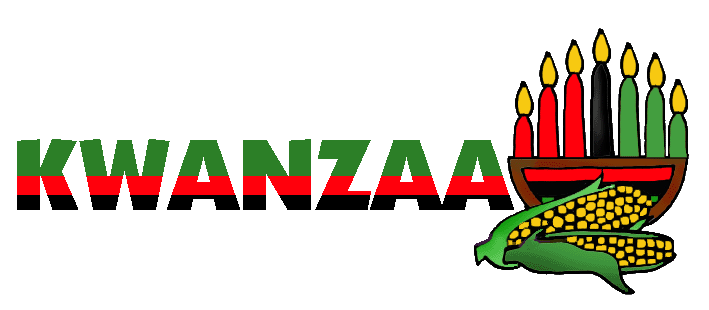For Kids: Kwanzaa is not a religious or a political holiday. Kwanzaa is a reflective holiday, introduced in the mid-1960's in the U.S. during the Civil Rights Movement. It is a time when African-Americans celebrate their African heritage.
Kwanzaa was created by a teacher, Maulana Karenga, Ph.D., chair and professor of African-American Studies at the California State University at Long Beach. He created this holiday in an effort to pull the African-American community together in pride and unity. The reflective nature of Kwanzaa is based on ideas borrowed from an ancient African Swahili seven-day-long harvest celebration.
Dr. Karenga took some old ideas, and added some new ideas, and came up with the incredibly neat celebration called Kwanzaa.
Kwanzaa begins each year on December 26 and lasts through the first day in January. The symbols of Kwanzaa are African harvest symbols, like ears of dried corn and colorfully woven tablecloths. People decorate their homes for Kwanzaa.
An important symbol is the wooden candlestick. This candlestick holds 7 candles in a row. The center candle is black, to signify unity. There are 3 red candles on one side, and 3 green candles on the other.
Day One: The black candle is lit. This is a day of togetherness, sharing feelings.
The family gathers and shares how they feel about things happening in their lives, and their feelings about each other. Many problems are cleared up during this day, simply by talking about them. The black candle signifies unity.
Day Two: A red candle is lit. This is a day of togetherness, sharing traditions.
Some people teach others how to braid hair. Other might teach how to play an African drum. Still others might share an African recipe.
Day Three: A green candle is lit. This is day of togetherness, sharing a common goal.
Everyone in the family works together to get a chore done - perhaps paint a fence or clean out the garage. What's important is that everyone works together to get the job done.
Day Four: A red candle is lit. This is a day of togetherness, sharing a family gift.
All year long, people save their pennies. At Kwanzaa, they buy one gift that the whole family can enjoy. In years to come, every time any in the family sees this item, they will remember the family Kwanzaa. It can be anything, from a new staircase to a tiny cookie cutter.
Day Five: A green candle is lit. This is a day of togetherness, sharing dreams and hopes. This is an especially good day to ask your children, "What do wish to accomplish in the new year?"
Day Six: A red candle is lit. This is a day of togetherness, sharing creativity.
First, everyone in the family creates something - a poem, a story, a dance, a painting. In the early evening, the family gathers. Each family member shares what they have created.
Day Seven: A green candle is lit. This is a day of togetherness, sharing a feast.
Baked ham, roasted yams, collard greens, thick bread - it is a wonderful feast.
And that is Kwanzaa. You can see why it is such a popular holiday!
